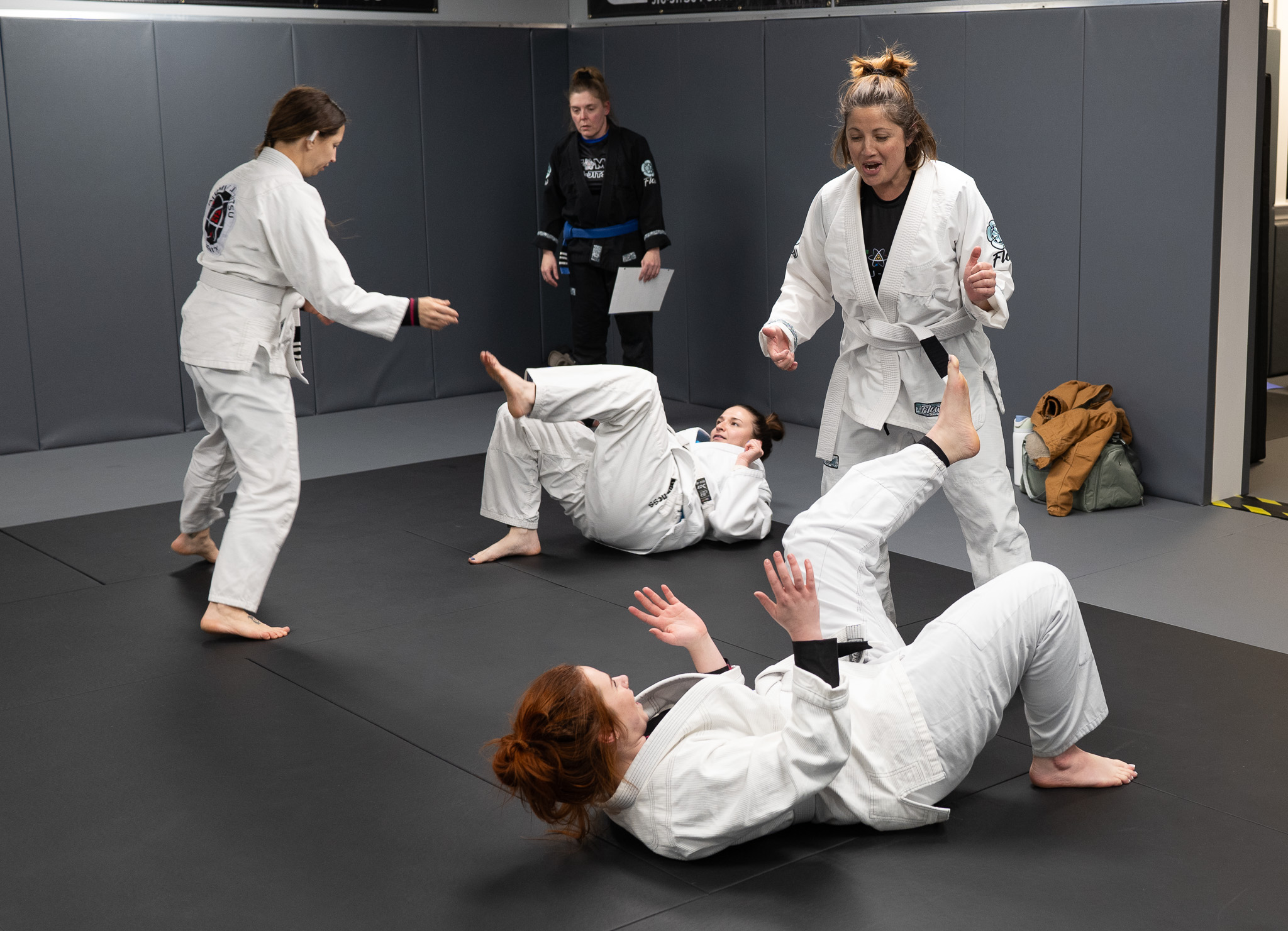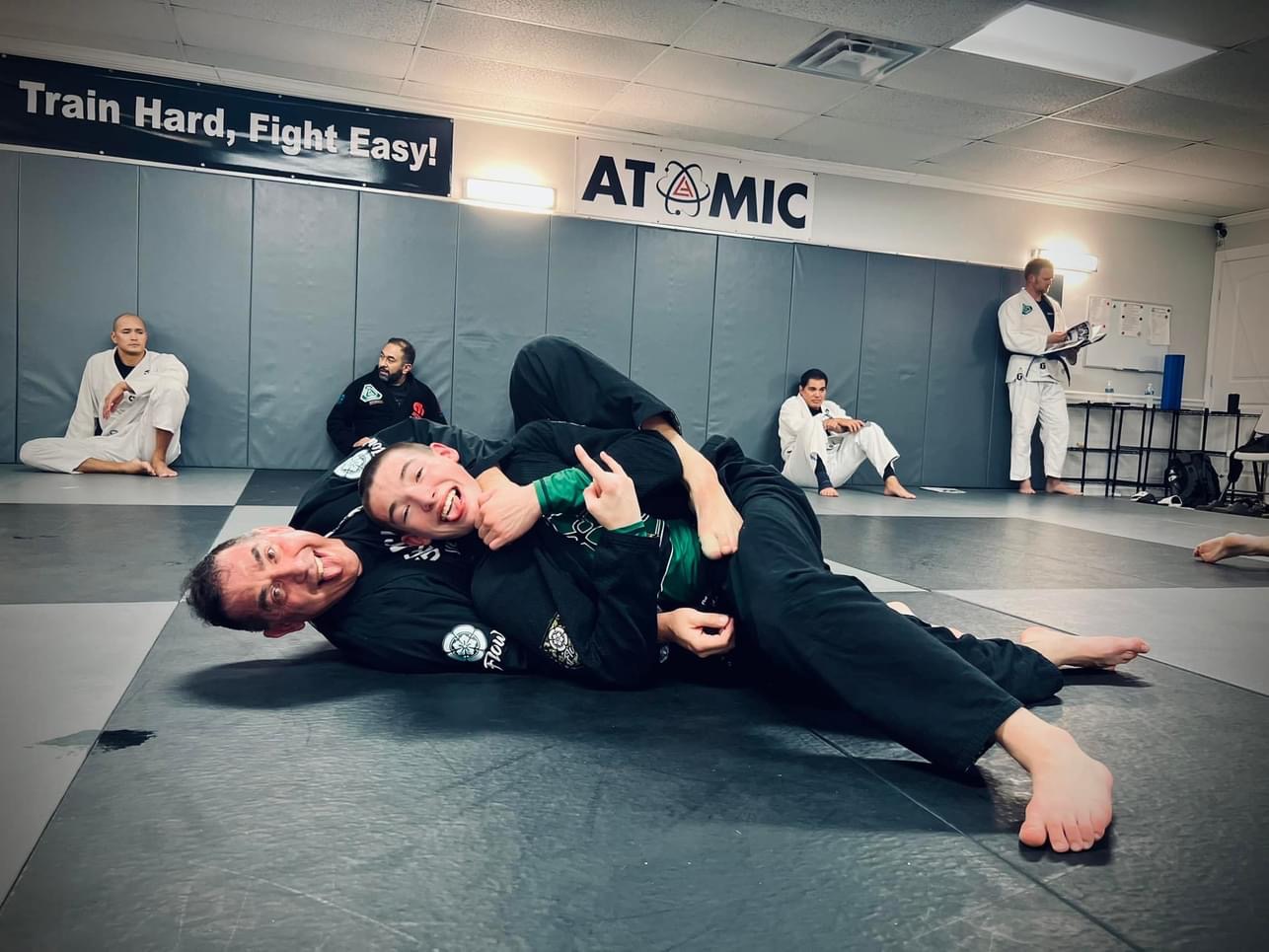How Jiu-Jitsu Teaches Resilience and Adaptability
Atomic Jiu-Jitsu
By Faith A Mooney
Brazilian Jiu-Jitsu (BJJ) is often referred to as “the gentle art,” but make no mistake—it’s one of the most challenging martial arts to learn. Beyond its physical demands, Jiu-Jitsu requires practitioners to develop mental toughness, resilience, and adaptability. Traits like these that are cultivated on the mats, spill over into daily life, empowering students to face challenges with grit and flexibility.
This article explores how Jiu-Jitsu fosters resilience and adaptability, shaping practitioners into individuals who can navigate life’s ups and downs with confidence and grace.
Learning to Fail and Keep Going
Failure is an inevitable part of Jiu-Jitsu. Whether it’s being submitted during a roll or facing a loss in a competition, every practitioner experiences setbacks. However, these moments should not be seen as defeats but as opportunities to learn and grow.
Resilience in Action:
- Athletes learn to embrace failure as a stepping stone toward improvement.
- Each mistake provides feedback, teaching students what doesn’t work and encouraging them to try again with a different approach.
- Over time, this mindset of perseverance builds resilience, making it easier to bounce back from difficulties both on and off the mats.

Adapting to Different Opponents
No two training partners or opponents are the same. Each brings their unique style, strength, and skill level, forcing you to adapt your game plan. What works against one opponent might fail against another, requiring you to think on your feet and adjust.
Adaptability in Action:
- Athletes must develop multiple strategies to address different scenarios, such as defending against a larger opponent or countering a faster one.
- Rolling with varied partners helps you become comfortable in unpredictable situations, sharpening your problem-solving skills.
This adaptability translates into real life, teaching you to remain calm and resourceful when faced with unexpected challenges.
Overcoming Plateaus
Progress in Jiu-Jitsu is rarely linear. Plateaus, where improvement feels stagnant, are common and can be discouraging. These moments test an athlete’s resolve to keep showing up, even when it feels like they’re not advancing.
Resilience in Action:
- Athletes learn to push through plateaus by focusing on small, incremental improvements rather than immediate breakthroughs.
- They develop patience and trust in the process, knowing that consistent effort eventually yields results.
The ability to endure these periods of stagnation fosters resilience, teaching you that perseverance is often the key to success.
Embracing Discomfort
Jiu-Jitsu often places practitioners in physically and mentally uncomfortable positions—being pinned under an opponent, struggling to escape a submission, or feeling exhausted after a tough roll.
Resilience in Action:
- Athletes learn to remain calm under pressure, focusing on solutions instead of succumbing to frustration or panic.
- Over time, this repeated exposure to discomfort strengthens mental fortitude, making challenges in everyday life feel more manageable.
Continuous Learning and Adaptation
Jiu-Jitsu is a never-ending journey of learning. New techniques, counters, and strategies are constantly emerging, requiring practitioners to stay curious and adaptable.
Adaptability in Action:
- Athletes are encouraged to stay open-minded, exploring new styles and ideas instead of clinging to what they already know.
- They learn to view change as an opportunity for growth rather than a threat to their existing skill set.
This mindset helps students navigate changes in life with a sense of curiosity and confidence.

Building Mental Toughness Through Competition
For those who choose to compete, Jiu-Jitsu offers a unique opportunity to test resilience and adaptability in high-pressure situations. Competitions often involve nerves, unexpected challenges, and split-second decisions.
Resilience in Action:
- Competitors learn to recover quickly from mistakes and adjust their strategies mid-match.
- The experience of competing, win or lose, builds confidence in their ability to handle adversity.
Lessons That Go Beyond the Mats
The resilience and adaptability cultivated in Jiu-Jitsu extend far beyond the training environment. Practitioners often find themselves better equipped to handle challenges such as:
- Navigating career changes or setbacks
- Managing personal relationships with patience and flexibility
- Facing life’s uncertainties with a calm and resourceful mindset
Jiu-Jitsu teaches that success isn’t about avoiding challenges but about how you respond to them.
Practical Tips to Build Resilience and Adaptability in Jiu-Jitsu
If you want to strengthen your resilience and adaptability on the mats, try these strategies:
- Embrace Challenges: Seek out training partners who push you out of your comfort zone.
- Stay Consistent: Even when progress feels slow, keep showing up and trust the process.
- Reflect on Mistakes: Use every roll and technique drill as an opportunity to learn.
- Be Open to Feedback: Listen to your coaches and training partners to refine your skills.
- Set Small Goals: Break down your progress into manageable steps to stay motivated.
Conclusion
Jiu-Jitsu is a powerful teacher of resilience and adaptability. By facing challenges head-on, learning to adjust in the moment, and persevering through setbacks, practitioners develop traits that benefit them in all aspects of life. Whether you’re a beginner navigating the steep learning curve or an experienced practitioner refining your game, Jiu-Jitsu will continue to test and strengthen your ability to adapt and overcome.
So, step on the mats with confidence, knowing that every roll and challenge is shaping you into a stronger, more adaptable version of yourself.

